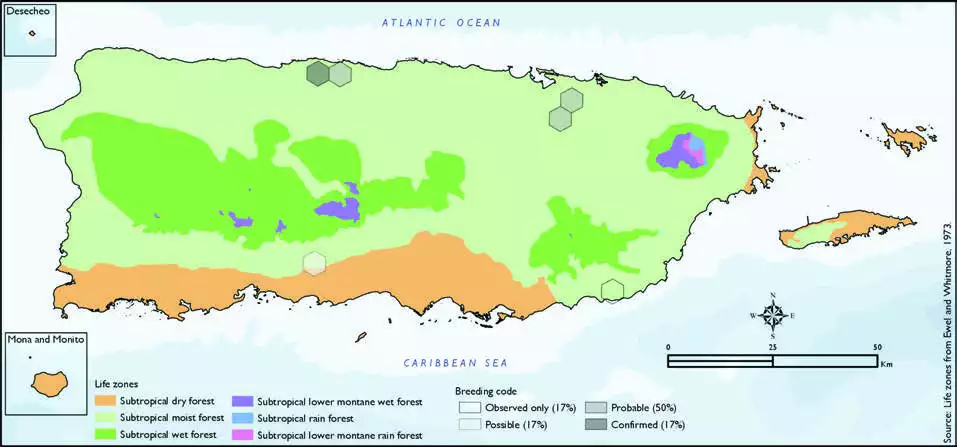Red-masked Parakeet
Description
The red-masked parakeet (Psittacara erythrogenys) is a medium-sized parrot from Ecuador and Peru. It is popular as a pet and are better known in aviculture as the cherry-headed conure or the red-headed conure. They are also considered the best talkers of all the conures.
Red-masked parakeets average about 33 cm (13 in) long, of which half is the tail. They are bright green with a mostly red head on which the elongated pale eye-ring is conspicuous; the nape is green. Also, the lesser and median underwing coverts are red, and there is some red on the neck, the thighs, and the leading edge of the wings. Juveniles have green plumage, until their first red feathers appear at around the age of four months. Its call is two-syllabled, harsh and loud.
Distribution & Habitat
The Red-masked Parakeet is native to Ecuador and Peru
(Best and others 1995, Clements
and others 2001, Juniper and Parr
1998), and has been introduced
to Puerto Rico where it mostly
occurs in urban areas and
forested areas nearby (Falcón
and Tremblay 2018). Populations
are concentrated in the San Juan
metro area and around Arecibo-
Barceloneta on the north coast
and has shown a population
increase on the island (Falcón
and Tremblay 2018). The atlas
fieldwork yielded a total of seven
records within six hexagons or 1
percent of the 479 total hexagons (see map). Of the six hexagons
where this species was found,
breeding met the atlas definition
of confirmed in 17 percent (one)
of the hexagons, probable in
50 percent (three), and possible
in 17 percent (one), while the
species was also observed in an
additional hexagon (17 percent)
but without evidence of breeding
(see map). Red-masked Parakeet distribution. The map shows the highest breeding code by hexagon and overlaying the ecological life zones in
Puerto Rico. Note: percentages may not total 100 due to rounding.

Breeding Habits
The Red-masked Parakeet nests in tree cavities/holes (Juniper
and Parr 1998), termite nests, or
cliffs (Juniper and Parr 1998).
Atlas results show that this
species breeds during April, 193Red-masked Parakeet/Perico FrentirrojoJuly, and December, peaking in December (see chart), in the
subtropical moist forest life zone
(100 percent of the hexagons)
(see table and map).
Conservation
The current overall population trend of the Red-masked
Parakeet has not been quantified
or assessed, but the species is
suspected to be undergoing a moderately rapid decline due to
trapping for the pet trade as well
as habitat loss and fragmentation
(BirdLife International 2018).
However, the population trend
for this species in Puerto Rico
is described as increasing
(Falcón and Tremblay 2018).
This species is currently listed
as a Near Threatened species by
the IUCN (BirdLife International
2018). Locally, this species is not listed in any of the threatened
categories of PRDNER and
USFWS. In Puerto Rico, the Red-
masked Parakeet has a protected
habitat in land of 13 percent or
15 km2 of the total area covered by the hexagons where evidence
of breeding was found for this
species (119 km2).
Related Species
Family:
parakeet